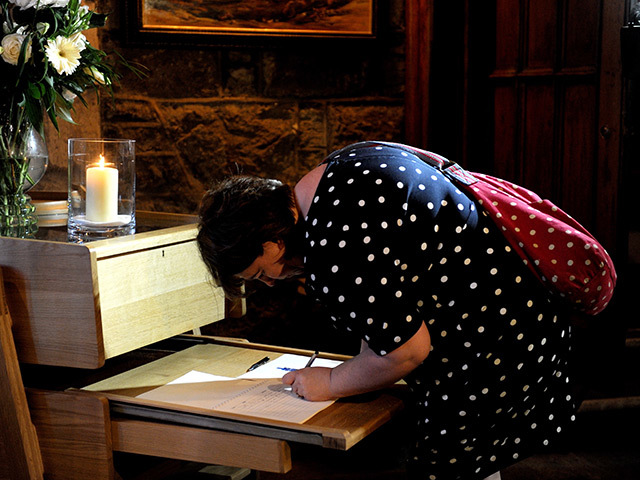
The body of the fourth victim of Friday’s fatal North Sea helicopter crash has been returned to the mainland – as union members prepare to protest outside the base of the helicopter’s operator.
The final body arrived in Aberdeen at 8am this morning via ferry from Shetland, after the bodies of the other three victims had been returned yesterday.
Duncan Munro, from Bishop Auckland, 57-year-old George Allison from Winchester, Elgin woman Sarah Darnley, 45, and 59-year-old Gary McCrossan from Inverness died after the CHC-op[erated AS332 L2 they were travelling in from the Borgsten Dolphin crashed into the sea south of Sumburgh.
Members of the RMT are to protest outside CHC’s base at Aberdeen Airport tomorrow morning after demanding action on offshore safety.
Union members will be joined by their counterparts from Norway’s IE energy union to call for improved safety measures.
“No one should underestimate the level of grief and anger felt amongst the offshore workforce in light to Friday nights latest disaster,” said RMT general secretary Bob Crow.
“That anger can be seen across the social media sites. 25 years after Piper Alpha the industry is today confronted by another series of basic demands and assurances on worker safety.”
But an aviation industry body has given its support to the Super Puma fleet.
The British Airlines Pilots Association (Balpa) said it would be a mistake to draw early conclusions about the cause of the crash.
“In the meantime Balpa wishes to confirm that the confidence of its members in the Super Puma family of aircraft remains unchanged,” the group stated.
“Indeed the aircraft continues to operate commercial air transport flights throughout the rest of the world including the Norwegian sector of the North Sea.
“We should not rush to judge an aircraft which has three very different variants and has successfully transported millions of passengers worldwide in safety over 30 years of operation.
“However, once the recommendations of the AAIB accident report into last Friday’s accident have been published, Balpa believes there is a need to take a step back and, as well as reviewing each of the five individual accident investigations, to consider as a whole what can be done to improve the safety of both the offshore workforce (our passengers) and Balpa members who share the same risks, but on a daily basis.
The hunt is continuing for the aircraft’s black box recorder, with salvage experts using specialist sonar equipment to trace the unit.
Once traced, the recorder will be transported to the Air Accident Investigation Branch headquarters in Hampshire to try and determine what caused the helicopter to crash.
Meanwhile the wreckage of the helicopter is due to be transported to the mainland by the Bibby Polaris salvage vessel.
Recommended for you
